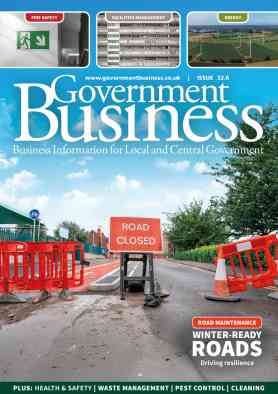Leeds lead the way in Passivhaus education
 Richmond Hill Primary School, built on behalf of Leeds City Council, will use up to 80 per cent less energy than a conventionally built facility, reducing carbon emissions by 60 per cent without the use of renewable energy.
Richmond Hill Primary School, built on behalf of Leeds City Council, will use up to 80 per cent less energy than a conventionally built facility, reducing carbon emissions by 60 per cent without the use of renewable energy.
The new school was given a Passivhaus air tightness target of 0.6 ACH (Air Changes Per Hour), which means the building must not leak more than 0.6 times its volume of air per hour at 50 pascals. This level of air tightness is well over ten times better than the current building regulations’ requirement of 10m3/m2/hour at 50 pascals. However, tests have revealed the school has achieved an enormously impressive 0.25 ACH, which is just 1/20 of the ACH level required by British Building Regulations. Superb levels of insulation, coupled with a highly efficient mechanical ventilation heat recovery (MVHR) system have all contributed to achieving its Passivhaus certification.
High strength insulation
Helping to achieve superior levels of thermal insulation is Interserve’s solution for the eradication of cold bridging between the building’s piled foundations and steelwork frame, using high-strength insulation normally used in industrial process plant installations.
The walls and roof of Richmond Hill School achieve excellent thermal insulation performance, with U-Values far exceeding the requirements of the current building regulations. Structural Insulated Panels (SIPs) manufactured off-site featuring polyurethane insulation have been used to form the structural fabric of the walls, and further SIPs panels with extra mineral wool insulation from the roof of the new building. The materials enable an impressive U-Value of 0.1W/m2K to be achieved for the walls.
Triple glazed timber windows, certified by the Passivhaus Institute, facilitate excellent standards of thermal insulation, whilst also helping to keep air leakage to a minimum. The specific heat demand of the building is 11kWh/m2/year (well under the target of 15kWh/m2/year) and the Primary Energy Demand is 112kWh/m2/year (again, well below the target set of 120 kWh/m2/year); therefore the school will benefit from lower energy costs.
The school also features a twenty-six place nursery and an integral sixteen-place Autistic Spectrum Condition facility.
Commenting on the build, the school’s chair of governors Tommy Hall, said: “Throughout the development of the new build, our builders have been outstandingly kind, considerate and professional. From development to the finish they have communicated and taken on board ideas and discussions. Our head teacher has nothing but praise for the team and stresses to the Governors that what could have been a difficult couple of years has been a delightful experience in working with Interserve.”
Richmond Hill Primary School is the third non-domestic Passivhaus-certified building constructed by Interserve, and is thought to be the largest Passivhaus-certified building in the UK. Swillington Primary School, one of these Passivhaus schemes, is also located in Leeds, and has also recently been completed by Interserve in partnership with Leeds City Council. Richmond Hill Primary School has recently won the Yorkshire and Humberside Constructing Excellence Innovation Award.
Fast growing standard
Passivhaus is the fastest growing energy performance standard in the world with 30,000 buildings realised to date. The standard was developed in Germany in the early 1990s by Professors Bo Adamson of Sweden and Wolfgang Feist of Germany and the first dwellings to be completed to the Passivhaus Standard were constructed in Darmstadt in 1991. Although it is mostly applied to new buildings, it has also been used for refurbishments.
Further information
www.passivhaustrust.org.uk
www.passivhaus.org.uk
www.ukpassivhausconference.org.uk


